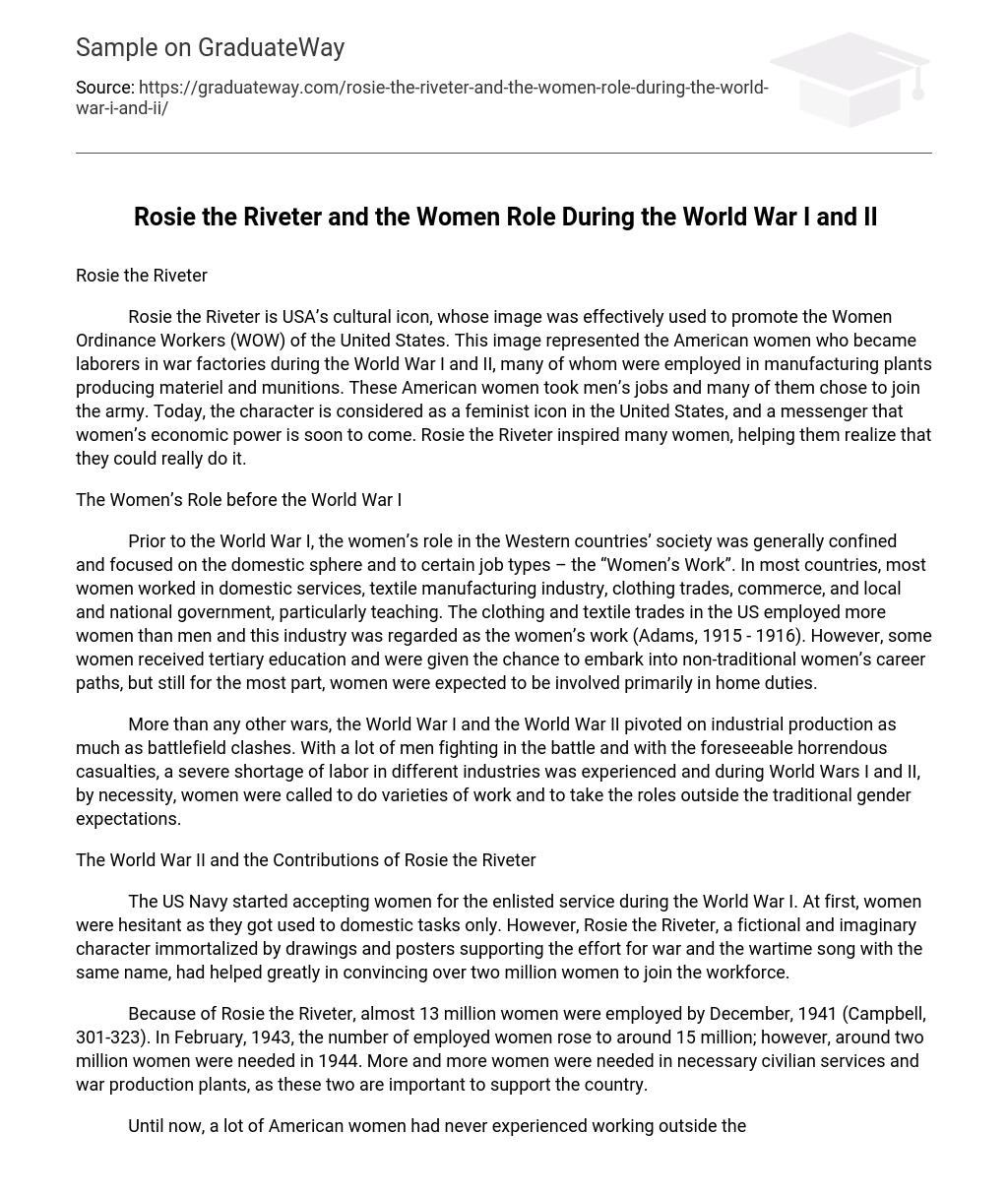Rosie the Riveter is USA’s cultural icon, whose image was effectively used to promote the Women Ordinance Workers (WOW) of the United States. This image represented the American women who became laborers in war factories during the World War I and II, many of whom were employed in manufacturing plants producing materiel and munitions. These American women took men’s jobs and many of them chose to join the army. Today, the character is considered as a feminist icon in the United States, and a messenger that women’s economic power is soon to come. Rosie the Riveter inspired many women, helping them realize that they could really do it.
The Women’s Role before the World War I
Prior to the World War I, the women’s role in the Western countries’ society was generally confined and focused on the domestic sphere and to certain job types – the “Women’s Work”. In most countries, most women worked in domestic services, textile manufacturing industry, clothing trades, commerce, and local and national government, particularly teaching. The clothing and textile trades in the US employed more women than men and this industry was regarded as the women’s work (Adams, 1915 – 1916). However, some women received tertiary education and were given the chance to embark into non-traditional women’s career paths, but still for the most part, women were expected to be involved primarily in home duties.
More than any other wars, the World War I and the World War II pivoted on industrial production as much as battlefield clashes. With a lot of men fighting in the battle and with the foreseeable horrendous casualties, a severe shortage of labor in different industries was experienced and during World Wars I and II, by necessity, women were called to do varieties of work and to take the roles outside the traditional gender expectations.
The World War II and the Contributions of Rosie the Riveter
The US Navy started accepting women for the enlisted service during the World War I. At first, women were hesitant as they got used to domestic tasks only. However, Rosie the Riveter, a fictional and imaginary character immortalized by drawings and posters supporting the effort for war and the wartime song with the same name, had helped greatly in convincing over two million women to join the workforce.
Because of Rosie the Riveter, almost 13 million women were employed by December, 1941 (Campbell, 301-323). In February, 1943, the number of employed women rose to around 15 million; however, around two million women were needed in 1944. More and more women were needed in necessary civilian services and war production plants, as these two are important to support the country.
Until now, a lot of American women had never experienced working outside their home and the idea that they could take jobs outside their home was completely brand new. This was not the first time that women were employed for jobs and positions in factories and office. However, during the World War II, the mandate was not simply economic.
The country’s major magazines dedicated their September 1943 covers to the roles of women in jobs related to war, creating around 125 million advertisements. The womanpower ads that were usually in full pages were included in the interior pages of the major magazines. Newspapers, motion pictures, trade press, radio, in-store displays, and employee publications all tied in essentially.
Conclusion
The underlying theme behind Rosie the Riveter was that the social changes needed to bring women into the labor or manpower was a patriotic or nationalistic responsibility for women, and a chance for employers to give support to the war economy. Rosie the Riveter led to a remarkable change in the relationship between the workplace and women. As a result, the employment outside the home became socially desirable and acceptable.
There is a very little doubt that the participation of women in the World War I especially in the World War II was a very important factor in the result of both wars. This participation tremendously changed the working lives and the social status of women not only in the United States but also in many countries from that period onwards. The contribution of Rosie the Riveter was very significant; however, the attitudes towards this contribution were usually paternalistic.
Work Cited
Adams, R. Arms and the Wizard. London: Cassell & Co Ltd, 1978.
Campbell, D’Ann. “Women in Combat”. Journal of Military History. 29 April, 1993. 57:301-323





